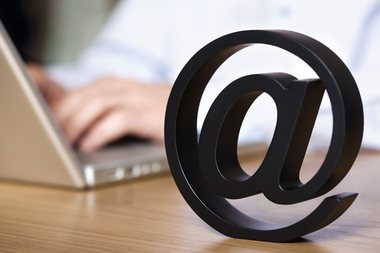1. Keep it under six sentences
Nobody likes to read long emails. As more people are checking their emails on their phones and tablets, you need to be succinct with what you write. Try to keep it brief by using no more than six sentences. This will force you to get to the point. If you need more sentences – consider calling the person or having a face-to-face meeting to communicate your thoughts.
2. Make it second priority
Don’t be a slave to your inbox. If you are, someone else has power of how effective your days are and that’s a recipe for disaster. The issue with people treating their inbox as their to-do list is that external people have direct control on how you go through your day and what your workload will be. Instead, you should be the one in control. Here is an easy way to get started with this: don’t check your email first thing in the morning. Make it the second thing – after you have done your most important task. This first simple step allows to take back control over your day. Even if email is very important to you, give this a try. If that means post-posing checking your email by half an hour – do it. That is plenty of time to do one important task.
3. Don’t always respond instantly
Email is not the best medium for urgent matters – that’s where phone calls excel. However, email is great for correspondence where you don’t require an immediate response. That’s why you want to make it a habit to not always respond to emails immediately. The idea is that you do not want to condition others that email is an effective medium for urgent matters. If the other person notices that you always respond to email within ten minutes, that person will start to assume he or she can email you for urgent matters. No. You want to avoid that as much as possible. Be upfront with people when you communicate a lot via email. I always tell others that they will get a response from me within two business days. If they need to reach me for something urgent, they can call or text me. Otherwise, I prefer to receive emails.
4. Email hotspots
If you constantly checking your email and you process your email as they come in, you are wasting a lot of time. Instead, you should check your email in batches. Batching tasks is an effective way of processing and getting things done that are similar in nature. That’s why you should do this as well as part of how you manage your emails. Here is a simple tip to do that: Check emails at fixed times and spend no more than half an hour each time. I like to call this concept “email hotspots” – the times of the day when you process your email in batches. This requires you to turn off your email program and to learn that it is okay to process emails at fixed times each day. This guidelines is flexible depending on how many emails you get. If you get less than thirty emails a day, checking your email twice in a day should be good enough. In a typical 9-to-5 day, 10am (you have an hour to do one task before checking your email) and 3pm are great times to do this.
5. Touch it once
The touch it once principle says that each item should only be handled once. This is especially the case for emails. Have you ever read an email, thought about replying back, postponed it and you had to reread the email again to understand what it was about? It happens to the best of us. Doing this for one email is fine. What if you have to do this with twenty emails? You will be wasting a lot of time. It’s more effective to deal with emails as you read them for the first time. Don’t let emails linger around “for later”. Touch it once. Read and decide what to do right away with it. If it takes less than two minutes to respond, do it right away. If you have to respond but for some reason you can’t – put the email in the drafts folder. This folder will have all the emails you’ve started to reply to, but have not sent yet. As you come back to it, you know where to find your email and you can promptly respond. (Photo credit: Businessman Working on Email via Shutterstock)
